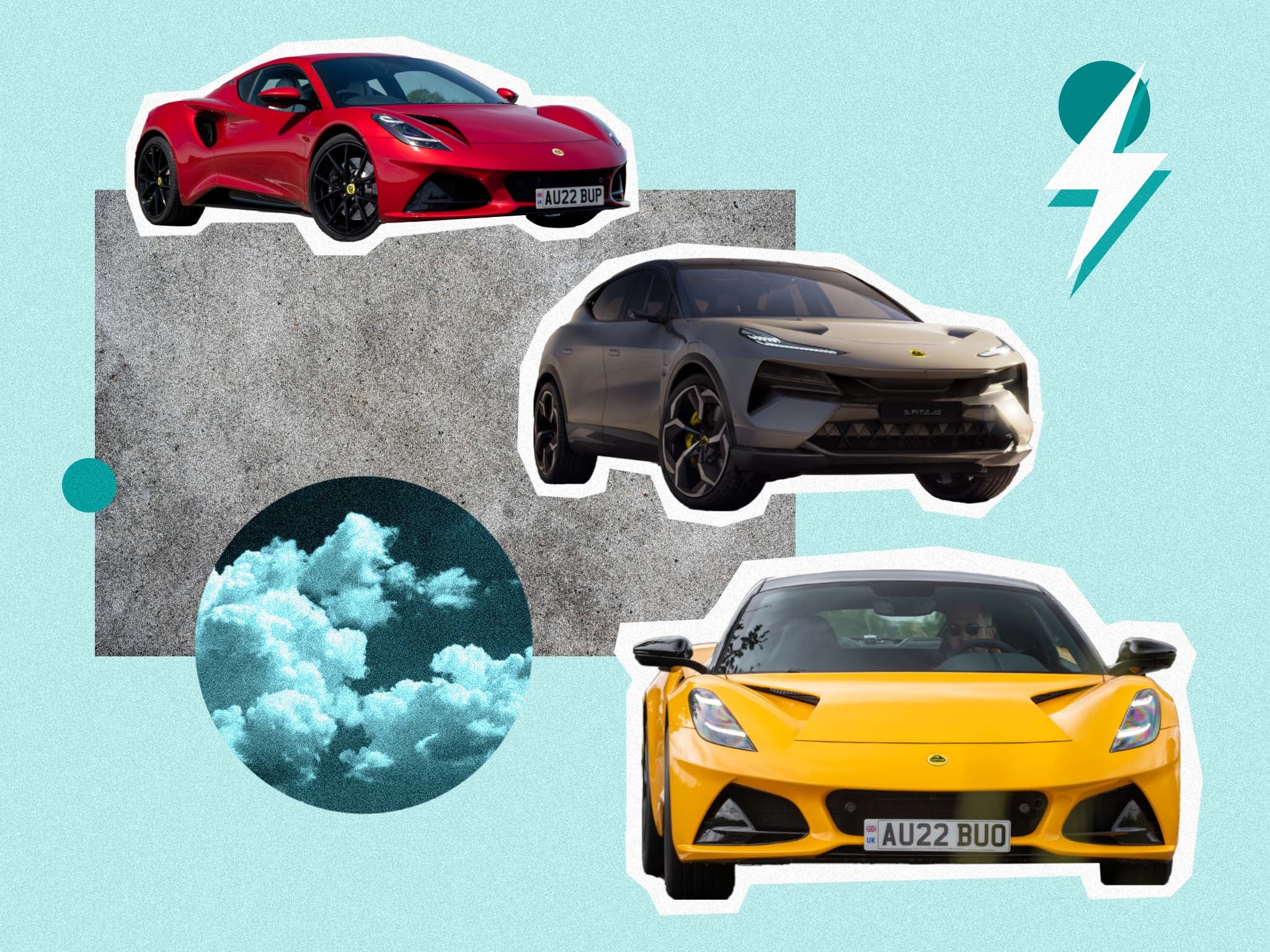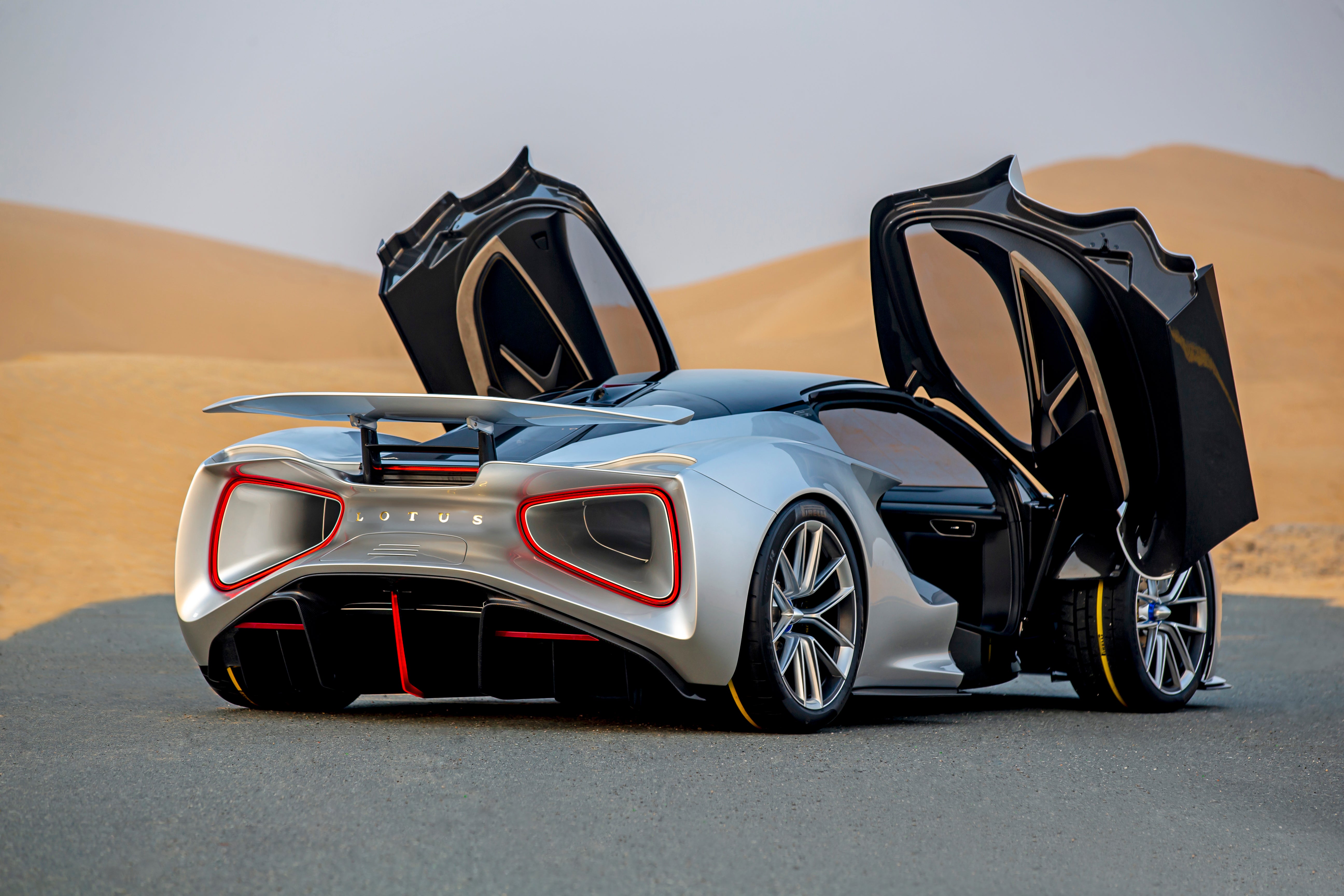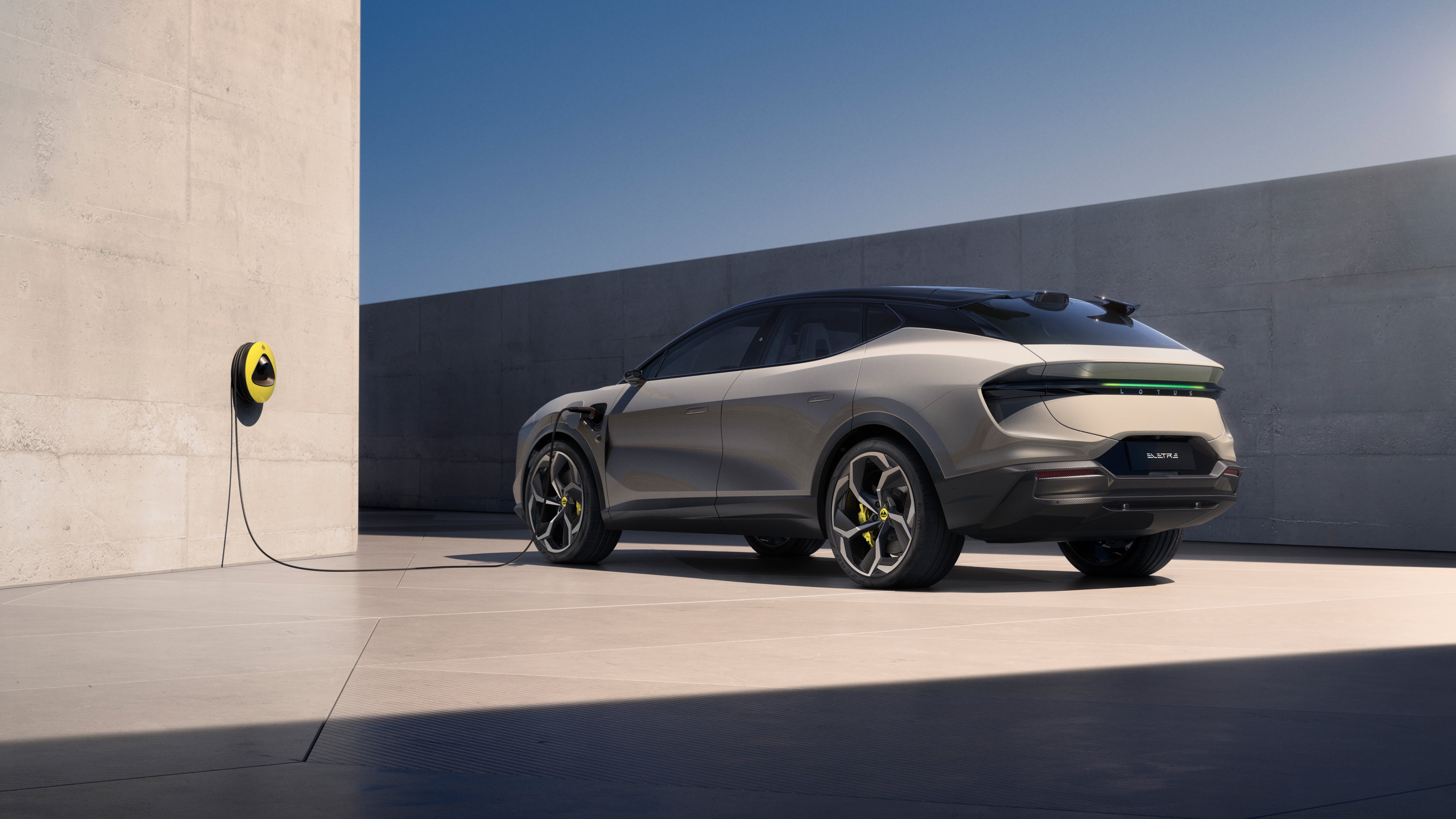The rebirth of Lotus in the age of the electric car
Lotus may be a small player in the grand scheme of things, writes Steven Cutts, but with the electric revolution the British company is hoping to change that


There was a time when British car companies were the dominant force on the global stage. During the early 1950s, Britain was the number one exporter of motor vehicles in the world and there were people in the industry at the time who thought they were looking at the new normal. To the modern mind, that time feels very distant but it’s probably worth remembering just how rapidly this field has evolved. By their very nature, no car company can be much more than 120 years old and, in a historical sense, the internal combustion engine looks set to have driven our lives for a vanishingly brief period.
Britain was never short on successful start-ups and a few of these have made it into the 21st century. Colin Chapman was the visionary engineer who founded the Norfolk-based Lotus cars, and while Lotus remains a niche player in the automotive world, it’s important to remember just how many of our iconic brands have faded out completely in the modern era. For the British car industry today, survival in itself is something of an achievement.
This year marks the 40th anniversary of Chapman’s death and since then Lotus has changed hands several times in that period. Unlike many of the smaller engineering firms in Britain, Lotus continues to prosper both as the maker of specialist cars and as an engineering consultancy group.
When the vogue towards an electric future was first gathering steam, many assumed that the smaller niche manufacturers like Rolls Royce and Lotus would ask for an opt-out from the new rules but in recent years most of these companies have announced a commitment to a battery-powered future. Smaller companies can be more nimble, but by their very nature, they have limited resources and the prospects of abandoning the internal combustion engine must have seemed daunting to say the least.
The German company, Porche sold more than 301,000 cars in 2021 with a global revenue of €30bn dollars. Britain’s answer to this kind of success is patchy to say the least. While companies such as Morgan, Aston Martin, Rolls Royce and Bentley all come with a similar mystique to Porche, their output is tiny in comparison with each of them producing just a few thousand cars a year.
The good news is that Lotus are still in the game and still coming up with new products. Their base in East Anglia is a rare example of hi-tech manufacturing in a region more commonly associated with farming and tourism. In the course of the last three years, they have unveiled three very distinct cars.
In July 2021 Lotus unveiled the all-new Lotus Emira, its last petrol-powered sports car and best-of-breed. For a niche two-seat sports car, it has done well but the future is likely to be electric.
Meanwhile, the hugely expensive Lotus Evija has been manufactured in very small numbers and has been pitched at the very wealthy. As a 1,973bhp hypercar, it is among the most powerful production cars in the world.
Now, Lotus is attempting to enter the all-electric era with the Eletre, a vehicle that they have described as “born British, raised globally” in part because the design work has been shared between Hethel in England, Raunheim in Germany, and Wuhan in China. The vehicle was premiered in March of this year. Predictably beautiful, this new Lotus hyper SUV is set to be released in the UK in the summer of 2023 at a cost of around £89,000. Again, this puts it outside the price range of most customers although many of the manufacturers who are making the transition to electric vehicles have pitched their early products at the top end of the market.

The majority shareholder of Lotus today is the Chinese company Geely, which also owns Volvo. Chinese ownership of European and American manufacturing companies has all kinds of implications and has become a hot topic on the political stage.
Just a few weeks ago, the German company BMW announced that it intends to stop producing the electric Mini in the UK. Production will be transferred to China. It’s a decision that was described as “very unfortunate” by a British transport minister. The explanation offered by BMW is more complex, but in a rapidly changing world, it can be argued that the hard data speaks for itself. As things stand, about 2 million electric vehicles are sold every year and about two-thirds of these are made and sold in China. In the longer term, it seems unlikely that any motor vehicle manufacturer can survive without having a major manufacturing facility in China and some of the next generation of Lotus cars look set to be assembled in China too.
But how easy is it for a relatively small company like Lotus to make the transition to an electric future while very large companies like Ford and Volkswagon are struggling to come to terms with the scale of the changes involved?

Lotus sees an opportunity in this new arrangement, one source told me.
“We don’t see ourselves as a small company, we see ourselves on a journey to become a global company. Our majority shareholder, Geely, and so we are part of the fastest growing automotive group in the world.” This ought to make expansion easier – a journey from a UK sports car company to a global business and brand.
On balance, this is probably a good thing because the competition in this field is likely to be ferocious. For most observers, the one to beat is the American company, Tesla. As a young start-up company, Tesla came from behind to usurp many a more well-established company. The fact that Elon Musk had no background in the automotive sector appeared to be more of an asset than a hindrance. However, we should not forget that the vehicle that first put Tesla on the map was actually built around the body shell of the Lotus Elise, which was manufactured in modified form in Hethel, England and shipped to the United States for final assembly. Today, Lotus regards the Tesla relationship as historical.
While improved battery technology has transformed the credibility of electric cars, the issue of range anxiety remains a significant problem
As things stand, the British government is committed to banning the sale of new cars with internal combustion engines by 2030. Vehicles already on the road will – presumably – continue to make their presence felt for some years afterwards but a world that is dominated by the electric engine is likely to feel very different from the one we know today. During the recent lockdown – many of us noticed that the air itself seemed cleaner. Once the majority of cars are zero-emission, this kind of air quality may become the norm, even in heavily congested cities.
But there are other advantages too. Britain is a net importer of oil, and oil imports are a major component of our trade deficit. Once the majority of our cars are electric, quite a big chunk of the trade deficit will evaporate with knock-on effects for the economy as a whole.
The noise created by dense traffic is also likely to subside and – perhaps most importantly – the art of car maintenance will change beyond recognition. Many people in Britain make a living changing car exhausts but in the brave new world of electric motoring, car exhausts will be a thing of the past. We should not forget that an electric motor includes far fewer moving parts than a petrol or diesel engine and it seems likely that the number of people employed in car maintenance looks set to implode.

Aware that the days of the internal combustion engine were numbered, Lotus looked around for a viable alternative. Like other manufacturers, they looked at hydrogen-powered fuel cells and also the possibility of using synthetic fuels but eventually concluded that the infrastructure required to make these products viable did not yet exist. For the time being, batteries look like the best way out of the fossil fuel conundrum.
The Lotus Eletre Hyper SUV has a range of up to 373 miles. It has an electric motor on each axle so all variants are dual-motor. The Eletre looks set to use virtual door mirrors with body-mounted cameras. When you look at the car from a distance, there almost don’t seem to be any wing mirrors. This kind of innovation is the kind of thing that can add cache to a niche player and attract attention in a ferociously competitive field.
One of the central driving forces behind the transition to an electric future is the astonishing progress that has been made in battery technology. While improved battery technology has transformed the credibility of electric cars, the issue of range anxiety remains a significant problem. Some companies are looking at the possibility of adding a photovoltaic roof to their vehicles although the amount of solar energy retrieved by a road-worthy vehicle in a temperate climate looks likely to be limited. Another way to enhance the performance of electric cars is regenerative braking. When a traditional car brakes, the car decelerates and the kinetic energy of the vehicle is converted into heat. The temperature of the brake pads goes up and the heat disappears into the Earth’s atmosphere.
Ordinarily, this energy is wasted but by using regenerative braking, at least some of the energy can be converted back into electricity and returned to the battery. Given the ongoing problems with range anxiety, this kind of tech is essential and Lotus is now incorporating regenerative braking into its electric model range. With the right kind of innovation, anything is possible and innovation is the one area where Lotus has always excelled.
Twenty years ago, if we had tried to start an entirely new car company, one of the most daunting problems would be how to come up with a new engine. The competition provided by legacy companies is immense. But in the electric era, experience counts for nothing. Since nobody has any experience with electric motors in the auto industry, there is a strange and new level playing field where newcomers can usurp the position of the old guard and tear up the rule book as and when they need to.




Join our commenting forum
Join thought-provoking conversations, follow other Independent readers and see their replies
Comments